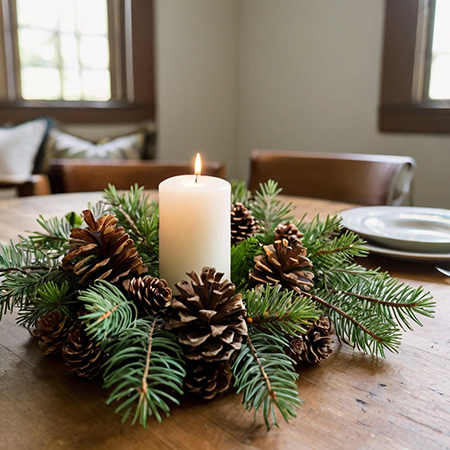Introduction
Christmas is a time for joy, celebration, and creating a cozy, festive home. But transforming your home into a holiday wonderland doesn’t have to break the bank. By focusing on repurposed materials and natural decorations, you can achieve a stunning Christmas aesthetic while keeping your budget in check. Read on to discover creative and affordable ways to decorate your home for less this holiday season.
1. Repurpose What You Already Have
Before heading to the store, take a look around your home for items that can be transformed into Christmas decor.
- Mason jars can double as elegant candle holders when filled with fairy lights or decorated with ribbons and pinecones.
- Old picture frames can be painted or repurposed as rustic chalkboard signs featuring holiday messages like “Merry Christmas.”
- Unused scarves can be draped over tables as festive runners.
Quick Tip: Repurposing not only saves money but also adds a personal, unique touch to your holiday decor.
2. Bring the Outdoors In
Nature offers a treasure trove of decorating materials that are both beautiful and eco-friendly.
- Use fresh greenery like eucalyptus, pine branches, or holly to create wreaths or table centerpieces.
- Collect pinecones and twigs to craft garlands or tree ornaments. Add a dusting of white paint or glitter for a snowy effect.
- String together dried citrus slices to create fragrant and eye-catching decorations.
DIY Idea: Combine fresh greenery with candles to create a simple yet elegant centerpiece for your dining table.
3. DIY Christmas Crafts
Get crafty and involve the whole family in creating budget-friendly decorations.
- Make paper snowflakes to hang from windows or ceilings.
- Craft pinecone ornaments using ribbons and paint.
- Transform old wine bottles into chic holiday vases with a coat of paint and some glitter.
Fun Activity: Turn DIY decorating into a family tradition by dedicating an evening to creating personalized ornaments or garlands.
4. Shop Smart for Natural Materials
If you need additional materials, head to thrift stores, local markets, or after-season sales to find affordable and sustainable options.
- Look for reclaimed wood signs or second-hand wreaths that can be refreshed with a little creativity.
- Buy bulk packs of candles, ribbons, or fairy lights to elevate your decor without spending a fortune.
Conclusion
This Christmas, skip the expensive store-bought decorations and embrace the beauty of repurposed and natural decor. By using what you already have and incorporating elements from nature, you can create a festive and inviting atmosphere that reflects your creativity and sustainability. Not only will you save money, but you’ll also reduce waste and make your holiday season even more meaningful.
Start decorating your home for less today and experience the joy of a budget-friendly, beautifully styled Christmas!




